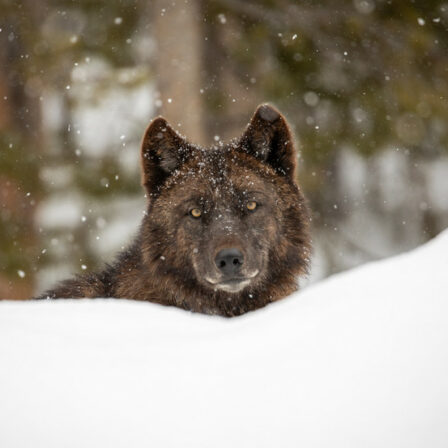| For Immediate Release, September 28, 2021 American Bumblebee Takes Step Toward Endangered Species Act Protection Bumblebee Once Found Across Country Has Nearly Vanished From 16 States WASHINGTON— The U.S. Fish and Wildlife Service announced today that the American bumblebee, whose populations have plummeted by nearly 90%, may warrant Endangered Species Act protection. The announcement kicks off a one-year status assessment of the species. Today’s finding comes in response to a petition filed in 2021 by the Center for Biological Diversity and the Bombus Pollinator Association of Law Students of Albany Law School. Only two bumblebees — the rusty patched and Franklin’s — are now protected under the Act. The American bumblebee was once common in open prairies, grasslands and urban areas across most of the United States but has experienced a rapid and severe decline. Over the past 20 years, it has disappeared or become very rare in 16 states; overall, observations of the bee have declined by nearly 90%. “This is an important first step in preventing the extinction of this fuzzy black-and-yellow beauty that was once a familiar sight,” said Jess Tyler, a Center scientist and petition co-author. “To survive unchecked threats of disease, habitat loss and pesticide poisoning, American bumblebees need the full protection of the Endangered Species Act right now.” American bumblebees are highly recognizable across the eastern United States, where they’re most common; the largest remaining populations are in the southern Great Plains and Southeast. But the bees are also found in southwestern deserts and, historically, as far north as North Dakota and Maine. They buzz across a wide range of open habitats, where they forage on a variety of flowering plants. The decline of this once-common species could have serious consequences for ecosystems: their varied diet makes them a highly important pollinator, essential for wild plant life as well as for the production of cultivated crops. The species’ decline has been the result of multiple concurrent threats, including habitat loss, pesticides, disease, climate change, and competition from (non-native) honeybees. Pesticide use, especially the widespread use of neonicotinoid insecticides, reduces survival and harms reproduction as well as bumblebee immune systems. And weakened immune systems make the bees more susceptible to diseases that are spread by domesticated bumblebees and honeybees. The Service will now initiate a scientific status review and public comment period before making a final decision on whether to protect the bumblebee. Background American bumblebees were first described before the United States won its independence and are known by their distinctive black-and-yellow color pattern. They’re social insects who live in colonies that can number in the hundreds, with workers and a single queen. They make their nests in pre-existing cavities like rodent burrows and rotten logs or on the surface of the ground in large grass bunches. The decline of the American bumblebee is part of a troubling downward trend in many of the 46 species of bumblebees and approximately 3,600 species of native bees in the United States that are needed to pollinate the full spectrum of wild plants. | 





0 comments on “American Bumblebee Takes Step Toward Endangered Species Act Protection”